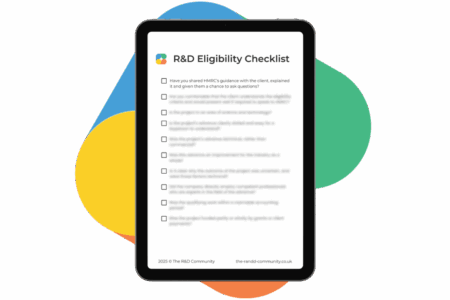It’s important to draw the distinction between problems that can be traced back to how you decide whether to take on a particular client, and the problems that arise further along in the claim preparation process. HMRC’s revamped approach to compliance has a lot of edges (sharp ones at that), and there are different problems and related root causes for rejected claims.
Without an effective screening process, you run the risk of spending lots of time and energy on claims that will never succeed, no matter how hard you try.
Acquiring leads in line with HMRC’s approach to compliance
Following HMRC’s blanket crackdown on non-compliant claims, lots of the less-scrupulous R&D advisory services ran for the hills. Their departure left a swathe of potential clients ripe for the picking, but you should be aware that:
- These now defunct R&D services weren’t selective about the clients they took on and prioritised quantity over quality.
- HMRC is starting to pay far more attention to how you win clients, and aggressive or pushy marketing may increase their scepticism over claims you prepare.
So, there are certainly opportunities – but you’ll need to be careful how you go about approaching them.
Why? Well, HMRC is now much stricter about which companies are granted R&D tax relief.
There are a lot of different issues that HMRC might raise as part of their revamped approach to compliance, even with claims that have seemingly strong grounds for eligibility.
How can you avoid these new pitfalls from the outset?
Three key areas of R&D lead qualification
While it may have been tempting in the past to take a risk on ‘thinly eligible’ or borderline clients, most advisors are now swinging towards a more eligibility-centric approach. These more scrupulous claims might result in more modest returns, but focusing on leads with strong grounds for eligibility will help the credibility and longevity of your business in the long run. It’s a more far-sighted approach, and you’ll build a better reputation that leads to repeat custom and referrals.
You should focus on these three aspects of claim eligibility when discussing R&D tax relief with potential claimants:
- Company records
- Competent professionals
- Project Details
Let’s look at each one in a little more detail.
Company records
This doesn’t strictly relate to financial records, but centres around ensuring that the claimant is the type of business that the scheme is intended to serve.
You should check:
- Are they subject to corporation tax?
- What is the SIC code?
- How many employees do they have?
- Have their accounts been completed on a “going concern” basis?
These questions are all completely outwith specific project details, but are equally important. Plus, because they’re about the company itself, the answers will (probably) be applicable to future claims by the same client.
Competent Professionals
The Competent Professional is probably the most important person in the whole R&D claim process. HMRC can easily refuse a claim that doesn’t include them or if their experience or qualifications appear lacking.
The parameters for these are pretty flexible. For the Competent Professional to have credibility with HMRC, there needs to be evidence of extensive technical experience, a successful track record and a good awareness of what was going on in their particular field. But why is the competent professional so important?
It’s not just about lending credibility to the company; the Competent Professional is the person that defines the technological baseline for the project and decides whether R&D is necessary. The whole crux of R&D, making a technological advance and overcoming uncertainty, is founded on their judgement. That’s why HMRC has made it such a staple of their approach to compliance, and why you should pay close attention to it.
Project Details
This is a broader area of eligibility, and you’re just looking to get an idea of whether you should engage with the client further.
You can touch on a few of the key things that HMRC now pays really close attention to, allowing you to build a strong case if you do proceed with preparing the claim. Discussing things like the industry the development was made in, the number of projects per year, and a bit more information about the technological baseline and relevant uncertainties are all important points to cover.
These are integral pillars of building a strong claim, so you don’t want to be going in blind.
How you can screen R&D clients in practice
Now, all that isn’t to say that you need to be perfect. You’re running a business here, after all. You’ll need to ensure you have a robust and profitable portfolio of clients, but remember that HMRC still has a strict view on eligibility.
If you’re looking for a practical tool to help you screen existing and prospective clients, we’ve developed one for just that purpose. Our Screening Template allows you to set your own criteria for screening prospects, to help you find the ideal leads for your business.
We’ve also developed a step-by-step guide to set it up and use it on your list of prospects





